Sofia is the capital of Bulgaria, which is in Eastern Europe. The city is in the country’s west at the base of the Vitosha Mountain, where you can ski in the winter. It isn’t a city that is visited as much as other European capital cities such as Rome, Paris, Madrid and Lisbon, but you will find plenty of things to do in Sofia.
Sofia has a history of occupation going back 2,000 years, which you will see in the architecture of the buildings and the artefacts in the museums. During its history, the Greeks, Romans, Ottomans and Soviets have been the ruling power.
There is plenty to keep you occupied in Sofia for at least a few days, if not longer, including a plethora of museums and churches, none of which are expensive to enter, and some are even free. Bulgaria, in general, is cheaper than a lot of other European countries, but this may change as more tourists choose this country for their holiday.
Bulgaria is one of the world’s largest wine producers, and in Sofia, you can book wine-tasting tours. When it comes to food, there are many traditional restaurants where you can try Bulgarian food but there are also international restaurants and even vegans and vegetarians are catered for. Sofia has four seasons with July being the hottest month and January, being the coldest. It can rain at any time of year so remember to bring an umbrella.
Contents
- Sofia, Bulgaria
- Top Tours
- 20 Things To Do in Sofia
- 1- Take A Guided Walking Tour of Sofia
- 2- Visit The Museum Of Socialist Art
- 3- Take a Day Trip From Sofia To Rila Monastery and Boyana Church
- 4- Visit The Alexander Nevsky Cathedral
- 5- Visit the Banya Bashi Mosque
- 6- Shop In Sofia’s Central Market Hall
- 7- Visit the Earth and People National Museum
- 8- Visit The Central Mineral Baths/Regional History Museum
- 9- Visit The Serdica Archaeological Complex
- 10- Admire The Frescoes In The St. George Rotunda Church
- 11- Take A Trip To The Past In The National Archaeological Museum
- 12- Visit the Saint Sofia Church
- 13- Admire The Paintings In The National Art Gallery
- 14- Visit The National History Museum
- 15- Shop ‘Til You Drop Along Vitosha Boulevard
- 16- Visit The National Ethnography Museum
- 17- Spend Some Time In The Sofia Synagogue
- 18- Pay A Visit To St. Nicholas Church
- 19- Enjoy A Wine & Cheese Tasting Experience
- 20- Take An Evening City Tour With A Folklore Dinner
Sofia, Bulgaria
Top Tours
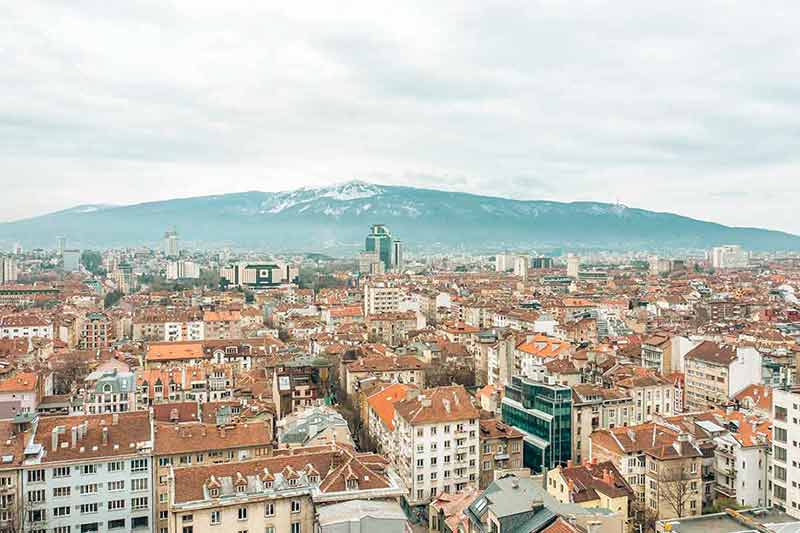
- From Sofia: Rila Monastery and Boyana Church Group Tour – a popular day trip.
- Sofia: Lovech, Devetaki Cave and Krushuna Waterfalls Tour – get out and about and explore nature.
- From Sofia: Belogradchik Rocks – a full-day tour exploring this amazing natural landmark in the Balkan Mountains.
Book your transfers: Transfer from Sofia airport to hotel in Sofia or vice versa
20 Things To Do in Sofia
1- Take A Guided Walking Tour of Sofia
There are many tours on offer which will give you a good introduction to the city of Sofia.
Your guide will take you to the points of interest and tell you about them.
Then you can decide which ones you want to explore in more detail at your own pace.
A typical walking tour will take you to such sites as the Alexander Nevsky Cathedral, the Banya Bashi Mosque, the Sofia Synagogue, the archaeological sites, and many museums.
Your guide will tell you about the different types of architecture in the city and show you good examples of each, such as the Neo-Byzantine style of the St.
Kyriaki Church, and the Neo-Classical architecture of the Ivan Vazov National Theatre.
Recommended tour:
- Sofia: Full-Day City Tour including UNESCO Boyana Church
- Sofia: Communist Walking Tour – discover hidden secrets from a local.
2- Visit The Museum Of Socialist Art
The Museum of Socialist Art is an outdoor museum in a park.
It was opened in 2011 and shows artwork from the time of Socialist rule, that is, from 1944 until 1989.
The park covers 7,500 sq. metres (80,729 sq. feet) and there are 70 large sculptures of prominent Bulgarian and Soviet communists such as Lenin, Dimitrov and Kolarov.
There are also a few sculptures of farmers, workers, and Red Army men.
There is an enormous five-pointed star on a pedestal that was once at the entrance of the former Party House in the centre of Sofia.
There is an indoor hall where temporary exhibitions are held and there is also a video room, showing films about Communist rule.
You can take an organised tour of the museum which also takes you to the Buzludzha Monument, a spaceship-like structure built by the Bulgarian Communist government.
Recommended tour: Sofia: Museum of Socialist Art and Buzludzha Monument Tour
3- Take a Day Trip From Sofia To Rila Monastery and Boyana Church
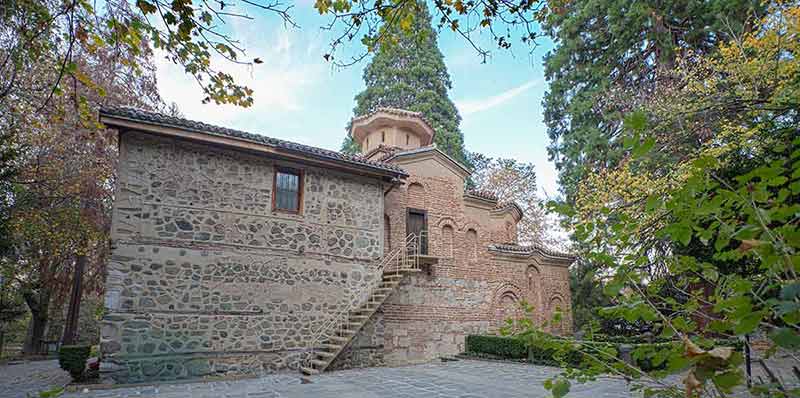
Rila Monastery and Boyana Church are both UNESCO World Heritage Listed Religious Sites.
The 10th-century Rila Monastery is the largest eastern Orthodox monastery in Bulgaria.
You can choose to have a guide or not although we advise booking one as you will be able to learn about the history of the monastery and the beautiful frescoes inside it.
The domes and the black and white arches have given it the reputation of being the perfect example of Bulgarian National Revival architecture.
The monastery has four chapels, 300 monk cells, and a library.
There is also a museum which has four exhibits displaying such artefacts as weapons, tools, and artwork.
You get three hours to explore the monastery and to have lunch at a nearby restaurant.
On the way back to Sofia, you will make a stop at the Medieval Boyana Church.
It contains some fabulous frescoes dating back to the 13th century.
Recommended tours:
- From Sofia: Rila Monastery and Boyana Church Group Tour
- From Sofia: 7 Rila Lakes and Rila Monastery Self-Guided Trip
4- Visit The Alexander Nevsky Cathedral
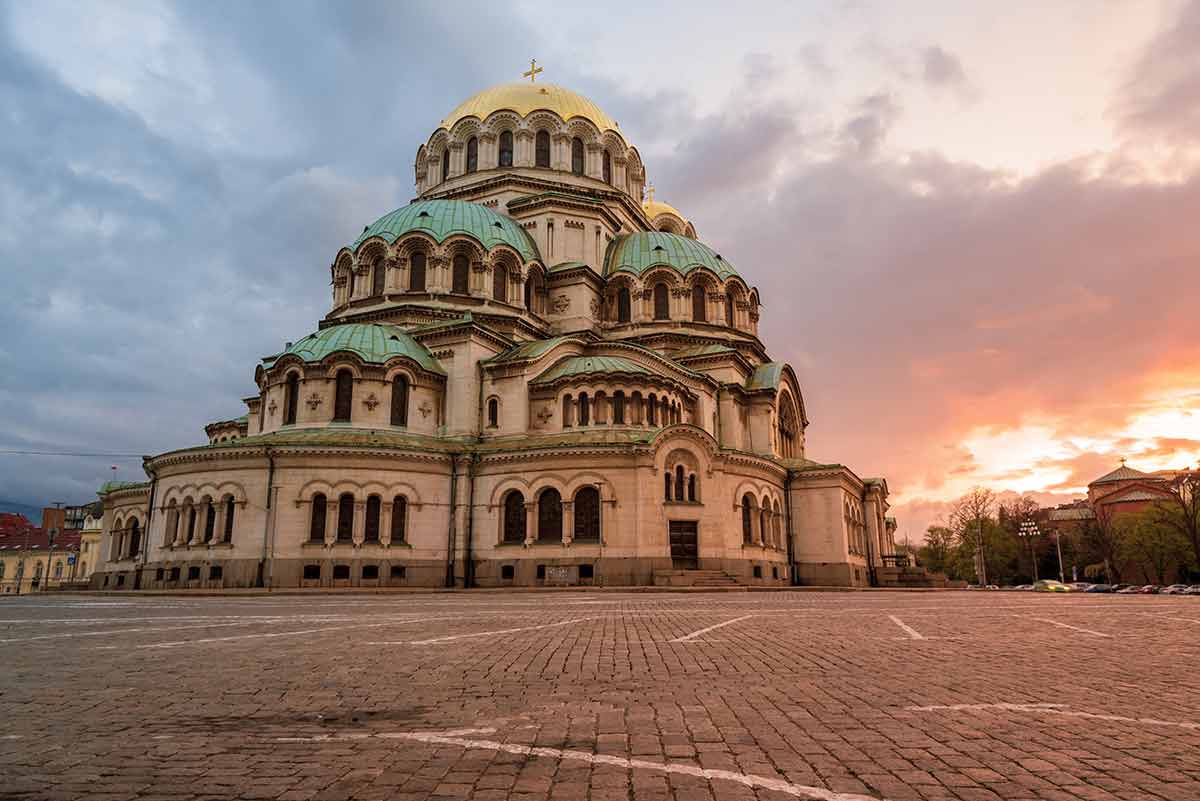
The most famous attraction in Sofia is the Alexander Nevsky Cathedral, which was built between 1882 and 1912 and is the second-largest church in the Balkans.
It is an Eastern Orthodox Cathedral built to commemorate those who died in the Russian – Turkish war of 1878 to 1879.
This war helped to extricate Bulgaria from the rule of the Ottoman Empire.
The Cathedral is large and holds around 10,000 people.
The exterior is impressive with numerous domes and turrets.
It looks like something out of a fairy tale, especially as the domes are covered in gold.
It offers great photo opportunities.
The Cathedral’s interior is festooned with gold ornaments, green marble floors, mosaics and intricate carvings.
A visit to the crypt underneath the Cathedral is recommended as there is a museum with Bulgarian icons, possibly the largest collection of Orthodox icons in Europe.
The Alexander Nevsky Cathedral is at Sveti Aleksander Nevski, 1000, Sofia Centre.
5- Visit the Banya Bashi Mosque
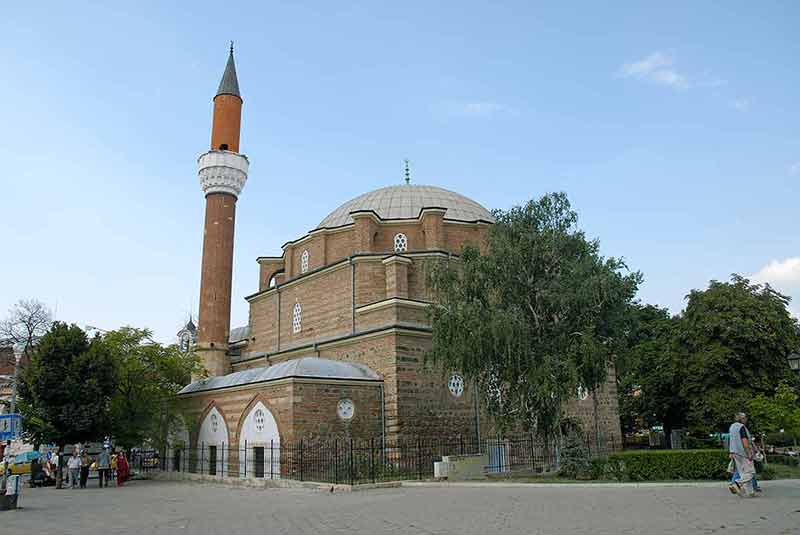
10% of the Bulgarian population are Muslims and during Ottoman rule, there were around 100 mosques in Sofia but now the Banya Bashi Mosque is the only one that is used.
You are welcome to visit it outside of prayer time and it is free to enter.
Women are allowed to enter as long as they are modestly dressed.
The Banya Bashi Mosque is an impressive building was built between 1566 and 1567.
It has an imposing minaret and a large dome measuring 15 metres (49 feet) in diameter.
The inside is stunning.
The eastern wall is covered in aquamarine tiles with texts from the Koran written using calligraphy.
There is an enormous tile with a picture of the Kaaba, the mosque in Mecca.
The domed ceiling is decorated with beautiful calligraphy.
An interesting feature of the mosque is that it was built over natural thermal spas and if you look at the vents nearby, you will see steam rising.
The Banya Bashi Mosque is at Knyaginya Maria Luiza 18, 1000, Sofia Centre.
Recommended tour: Sofia Half-Day Tour
6- Shop In Sofia’s Central Market Hall
To get a feel of Bulgarian life, spend some time in the Central Market Hall.
Before you even enter, you will notice that it is an impressive building.
It was built in the Neo-Renaissance style between 1909 and 1911 and has a lovely bell tower with three clocks.
Above the main entrance, is a relief of the coat of arms of the city.
There are three floors in the market.
The ground floor is the busiest and where you will find spices, fresh fruit and vegetables, meat, bread and pastries, olives, nuts, sweets, and local delicacies.
On the first floor, are clothes, accessories and jewellery.
On the lower ground floor is a fast-food restaurant selling typical Bulgarian food which you should try.
Sofia’s Central Market Hall is at Knyaginya Maria Luiza 25, 1000, Sofia Centre.
Recommended tour:
7- Visit the Earth and People National Museum
If you are interested in geology, this museum will suit you down to the ground but even if you’re not that bothered, you will be amazed by the exhibition of giant crystals from Brazil.
These crystals are spectacular.
The museum is one of the world’s largest mineralogical museums, with more than 27,000 rocks and minerals exhibited on two large floors.
Some are rare and others even come from outer space.
As well as viewing the rocks, crystals, and minerals, you will learn about mineral production, their uses and the types of minerals there are.
The Petar Tranteev collection is an impressive display of minerals found in caves over a period of 45 years.
The Earth and People National Museum is at Blod Cherni Vrah 4, 1421 g.k. Lozenets.
8- Visit The Central Mineral Baths/Regional History Museum
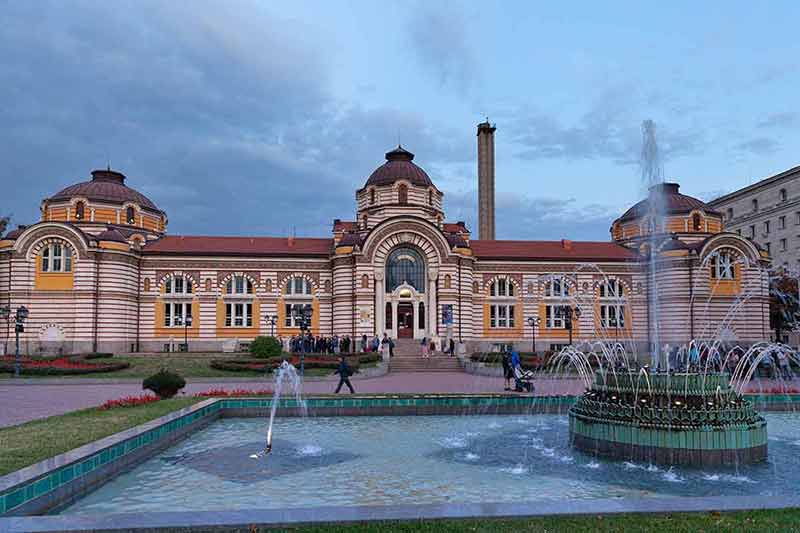
One of the most spectacular buildings in Sofia is the old Central Mineral Baths, which is now used as the Regional History Museum.
Here, you can learn about the history of Sofia and the building is well worth a photograph or two.
It was built in the Neo-Byzantine style and has an enormous dome, a large fountain and is painted in dazzling shades of yellow.
It is situated in Bath Square where, as far back as the 16th century, a Turkish steam bath was built.
The Central Mineral Baths were built in 1912 and, between 1913 and 1988, the city’s thermal baths were situated in the building.
The Regional History Museum houses artefacts from prehistoric times to the present.
There are old costumes on show, ceramics dug up during excavations, works of local art, carriages, and the first cars that were driven in Sofia.
The Central Mineral Baths/Regional History Museum is at Platno Banski 1, 1000, Sofia Centre.
9- Visit The Serdica Archaeological Complex
If you are interested in ancient history, head to the Serdica Archaeological Complex.
The complex show the remains of the Roman city of Serdica which is what Sofia was called when it was constructed between the 4th and 6th centuries.
Serdica was discovered in 2010 when the metro was being built.
You can see the remains of several streets, baths, houses, and an early Christian Basilica.
Coins, pottery, and ceramics were found here as well.
Part of the ruins are exposed to the elements while the rest is under a modern glass structure.
Both can be visited for free and you can see the Amphitheatre of Serdica, which is on two different sites in the centre of Sofia.
The Serdica Archaeological Complex is at pl Nezavisimost, 1000, Sofia Centre.
10- Admire The Frescoes In The St. George Rotunda Church
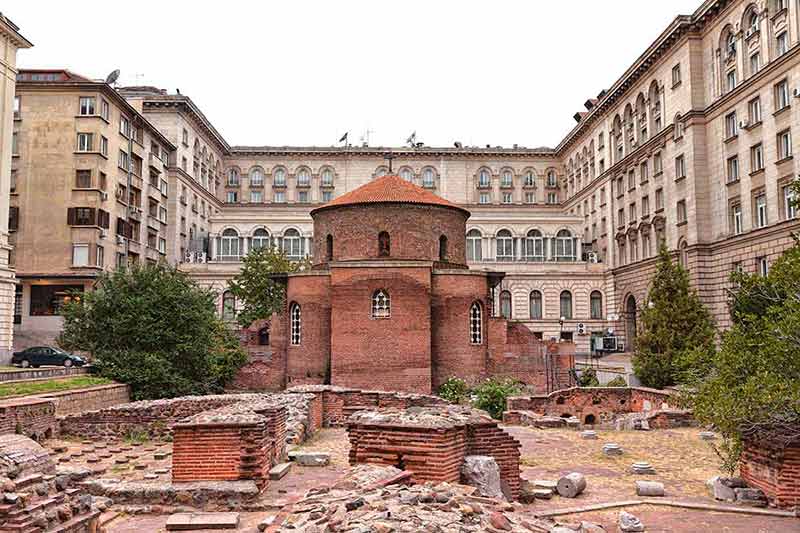
The St. George Rotunda Church is Sofia’s oldest preserved building.
It was built in the 4th century on the remains of a pagan temple and is set among the ruins of ancient Serdica behind the Sheraton Hotel.
It is interesting because its cylindrical dome sits on a square base.
Strangely enough, it was a Roman bath originally before becoming a church.
It is worth going inside the church as there are frescoes of prophets to be seen.
They line the dome and are 2 metres (6.5 feet) high.
There are three layers of frescoes in the dome, the oldest dating back to the 10th century.
They were covered over by the Ottomans and were only rediscovered and restored in the 20th century.
In the Rotunda, there are five layers of frescoes, the oldest being from the 4th century.
The third layer is very interesting.
It is a frieze with paintings showing the Ascension, the Assumption, and other such important Christian feast days.
They were painted in the 11th and 12th centuries.
St. George Rotunda Church is at Bul. Kniaz Aleksander Dondukov 2, 1000, Sofia.
11- Take A Trip To The Past In The National Archaeological Museum
The National Archaeological Museum was founded in 1892 and is one of the best museums in Sofia.
It is housed in what was the Buyuck Mosque, built in the 14th century.
There are five exhibition halls in the museum, and it houses around 50,000 objects.
In the Prehistory Hall, you can see items from as far back as 1.6 million years BC, including an engraved rock fragment.
Artefacts on display from the Stone and Bronze Ages include ancient weapons, tools, mosaics, pottery, sculptures, and gold and silver jewellery and other items.
You will be able to see interesting items from the Roman Age including the bronze head of Apollo.
There are also tombstones and statues of the pagan gods.
There is a hall dedicated to the Middle Ages which includes a 10th-century tombstone with the first inscription in the Cyrillic alphabet.
The National Archaeological Museum is at Saborna Street 2, 1000, Sofia.
12- Visit the Saint Sofia Church
The Saint Sofia Church is one of the highlights of Sofia.
It is the second oldest church in the city and one of the oldest in Europe.
It was built in the 6th century, commissioned by the Byzantine emperor, Justinian I.
It was constructed on the site of several 4th-century churches from the time when the area was known as the city of Serdica.
It gave its name to the city previously known as Serdica in the 14th century.
Under Ottoman rule, the became a mosque but became a church again when the Ottomans were expelled in the early 20th century.
It was restored in 2013 and is used for Orthodox services.
The three-nave Basilica of the Cross has beautiful early Christian floor mosaics.
In the apse, there is a picture of the Virgin Mary and Jesus surrounded by gold.
The Church has a massive dome with a diameter of 32 meters (105 feet) and two semi-domes.
Enormous marble columns support the dome, and the lower sections of the walls are covered in marble slabs.
The church also displays icons of various saints.
Underneath the church, is an underground museum which is well worth visiting, However, you do have to take a guided tour which lasts about 20 minutes.
There are four underground levels containing more than 50 tombs.
There are large family crypts, indicating that wealthy people were buried here.
Some of the tombs have even got frescoes and mosaics covering them.
There are also the ruins of four churches, one dating back to the 4th century.
The Saint Sofia Church is at ul. Paris 2, 1000, Sofia Centre.
13- Admire The Paintings In The National Art Gallery
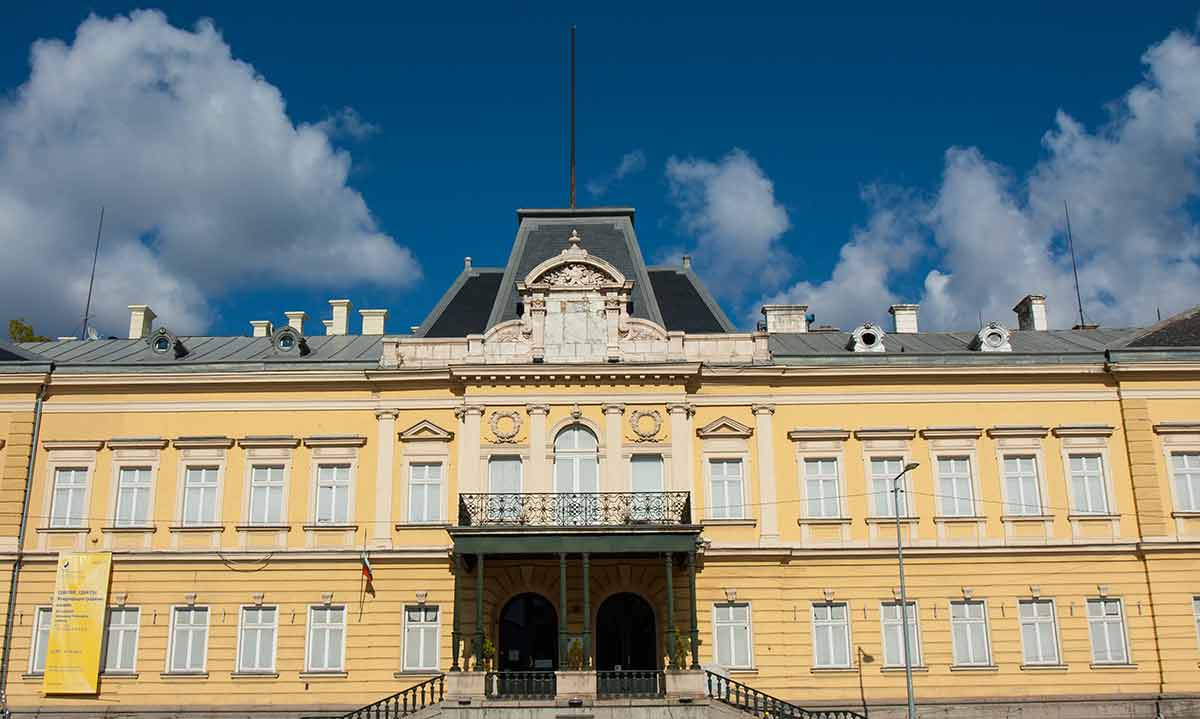
The National Art Gallery was founded in 1934 and occupies the former Royal Palace.
Here you will find more than 50,000 pieces on show, including many spectacular paintings, prints and sculptures.
The gallery has the biggest collection of Medieval art in the country, including over 4,000 icons.
It also has a collection of European art dating from the Renaissance to the 20th century and some Bulgarian pieces from the 19th century.
There is a collection of Russian art from the 18th to the 20th centuries and international pieces from the Americas, Africa, and Japan.
The National Art Gallery is at 1 Prince Alexander I Square, 1000, Sofia Centre.
Recommended tour: Sofia: Guided Street Art & Stunning Graffiti Walking Tour
14- Visit The National History Museum
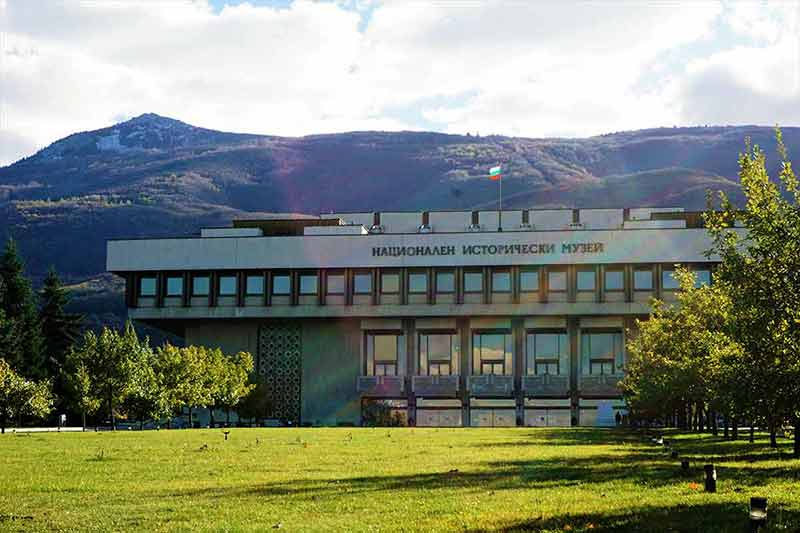
The National History Museum is one of Bulgaria’s largest museums, so plan to spend a few hours here to discover the country’s rich cultural history from as far back as prehistory up to modern times.
The museum is housed in the former communist presidential palace and has five halls, Prehistory, Thrace & the Middle Ages, the 2nd Bulgarian Empire (12th – 14th centuries), Bulgaria in the 15th – 19th centuries, and the third Bulgarian Empire from 1878 to the present day.
Amongst the treasures on show are Thracian gold items, Roman statues, folk costumes, weapons, icons, maps, and furniture.
In the courtyard, you will find a collection of stone columns and monuments from Greek, Roman, and Byzantine rule.
Outside, you can see a few Russian MiG fighters.
There is a buffet restaurant in the museum serving authentic Bulgarian food.
The National History Museum is at ul. Vitoshkolale 16, 1404, Boyana, Sofia.
15- Shop ‘Til You Drop Along Vitosha Boulevard
Vitosha Boulevard is one of the most popular shopping streets in Sofia.
It is also the longest, measuring 2.7 km (1.678 miles).
It is named after the Vitosha Mountain which you can see in the background of the street.
The street is completely pedestrianised and has a wide range of shops.
You will find international luxury brands here, such as Versace and Lacoste, as well as some Bulgarian high-end shops such as Bulgari.
However, you can also find high-street chain stores like H&M and Zara, as well as souvenir shops.
There are many cafes and restaurants along this street to suit all pockets.
Some serve traditional Bulgarian food while others are international, such as Russian and Italian.
Recommended tours:
16- Visit The National Ethnography Museum
This museum is housed in what was the Royal Palace, together with the National Art Gallery.
You could easily spend a full morning visiting both museums.
The National Ethnography Museum has over 50,000 artefacts, including copper objects, goldsmith crafts, clothes, wood carvings, ceramics, carpets, ritual objects, and furniture.
Everything in this museum pertains to Bulgarian life over the centuries.
It has one of the best collections of Bulgarian folk costumes in the country.
Note the intricate embroidery.
It is thought that embroidery is one of the most important elements in Bulgarian folklore.
The National Ethnography Museum is at 1 Prince Alexander I Square, 1000, Sofia
17- Spend Some Time In The Sofia Synagogue
There are just two synagogues in Bulgaria and the Sofia Synagogue is the largest.
It is one of the largest synagogues in Europe.
However, there are only a few thousand Jewish people in Bulgaria though most live in Sofia.
The synagogue is fully functional.
The facade of the synagogue is stunning and decorated with ornaments and stone carvings.
I suggest that you go inside as it is beautiful but to enter, you will have to donate and if you want a tour, there is a fee.
The architecture is Spanish-Arab in design, the floors are covered in Venetian mosaic, and there is a spectacular chandelier hanging in the middle of the ceiling.
The synagogue has a museum where you can see pictures and other items relating to the Jewish religion.
The Sofia Synagogue is at ulitsa Ekzarh Yousif 16, 1000, Sofia Centre.
18- Pay A Visit To St. Nicholas Church
The church of St. Nicholas is a Russian Orthodox church and is a stunning piece of architecture, inspired by Russian buildings of the 17th century.
It was built on the site of the Saray Mosque which was destroyed at the end of Ottoman rule in 1882.
The church has five domes, all of which are gilded with gold leaf.
The bells were donated by Emperor Nikolas II, the last emperor of Russia.
Inside the church are some spectacular wall paintings.
The crypt holds the remains of Saint Archbishop Seraphim, a man considered to be a miracle worker.
He died in 1950 but people still come to pray to him, asking for their wishes to come true.
St Nicholas Church is at 3 Tsar Osvoboditel Blvd. 3, 1000, Sofia Centre.
19- Enjoy A Wine & Cheese Tasting Experience
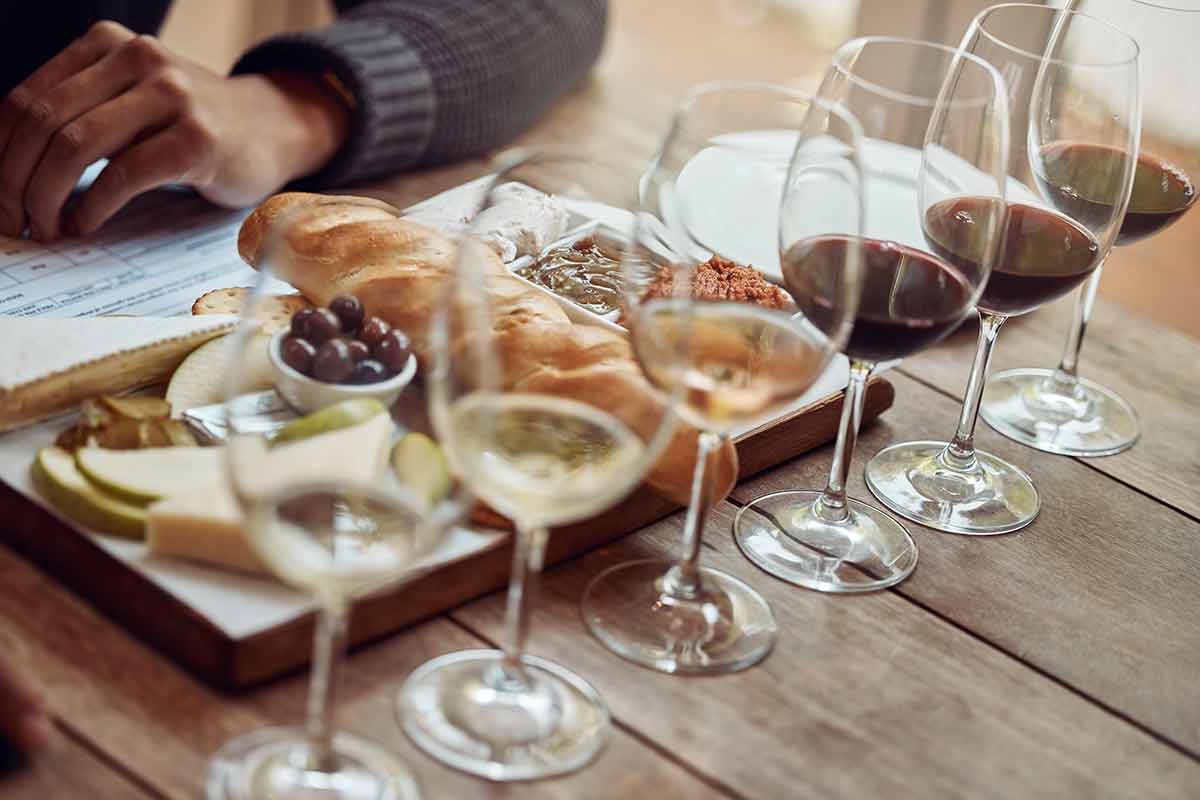
Bulgaria has been producing wine for over 5,000 years and they are one of the biggest producers in the world.
However, their wines aren’t as well-known as French, Spanish, German, or Italian wines.
Bulgarian wines are, despite this, of high quality so why not book a wine and cheese tasting? A typical tasting would include five different wines unique to the country, such as Miskets, Melnik, Mavrud, Guzma or Pamid.
They will be paired with Bulgarian cheeses and artisan bread sticks.
You can also have a wine tasting in a local home in Sofia where you will sample three Bulgarian wines with local cheeses and bread.
You will find your Bulgarian host welcoming and it will be a good introduction to Bulgarian life.
Recommended tour: Sofia: Wine & Cheese Tasting Experience
20- Take An Evening City Tour With A Folklore Dinner
This is a lovely evening activity which will familiarise you with the city and give you a glimpse into the lives of the Bulgarian people while travelling around in an air-conditioned minivan.
You’ll pass such buildings as the Alexander Nevsky Cathedral and in the main square of the city, Narodno Sabranie, you will see the Parliament buildings.
Other sites you may see include St. Nicholas Church, the National Stadium, and Vazov National Theatre.
You will have a guide with you who will tell you about the history and significance of the various buildings.
The last stop of the tour is at a restaurant where you will have a dinner made up of traditional Bulgarian dishes, served with local Bulgarian wine.
There will also be a folklore show with music and dance.
The experience will immerse you in Bulgarian life.
Recommended tour: City Tour and Folklore Dinner
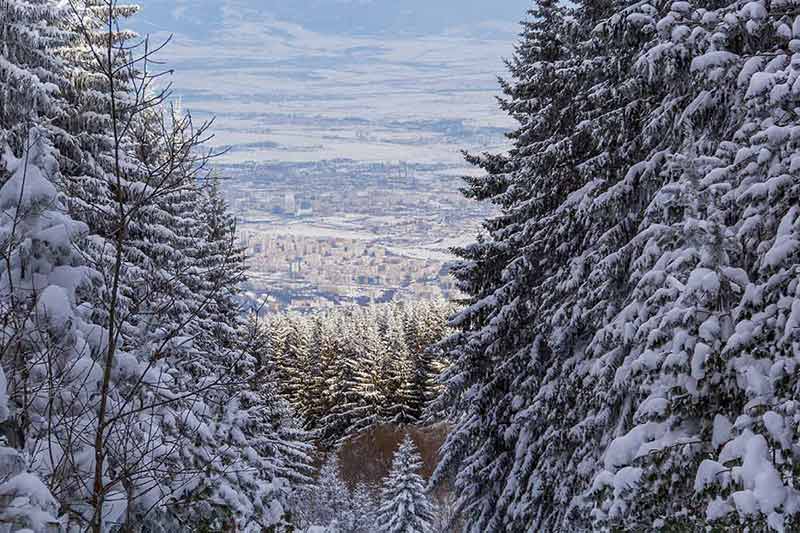
Exploring Eastern Europe? You may also like:
- 20 Landmarks in Bulgaria
- 20 Bulgarian Cities
- 20 Things To Do In Sofia
- 22 Landmarks in Hungary
- 20 Cities in Hungary
- 15 Things Hungary Is Famous For
- 22 Castles in Czech Republic
- 21 Landmarks in Czech Republic
- 20 Things To Do In Prague At Night
- 15 Things To Do In Prague
- 20 Day Trips From Belgrade
- 10 Things To Do In Belgrade
- 20 Cities in Serbia
- 20 Things To Do In Baku
- 20 Slovakian Cities and Towns
- 20 Slovenian Cities and Towns
- 20 Latvian Cities and Towns
- 20 Castles in Poland
- 20 Landmarks in Poland
- 20 Polish Drinks
- 20 Cities in Poland
- 20 Things To Do In Warsaw
- 20 Things To Do In Krakow
- 20 Things To Do In Krakow At Night
- 20 Things To Do In Gdansk
- 20 Castles in Romania
- 20 Landmarks in Romania
- 20 Cities in Romania
- 20 Castles in Belarus
- 20 Things To Do In Tbilisi
- 20 Things To Do In Armenia
- 20 Cities In Armenia
- 20 Things To Do In Riga
- 20 Things Romania Is Famous For
Plan Your Trip

Rent A Car – Find the best car rental rates at Discover Cars. They compare car hire companies to provide you with the best deal right now.

Find A Hotel – If you’re curious about this article and are looking for somewhere to stay, take a look at these amazing hotels.

